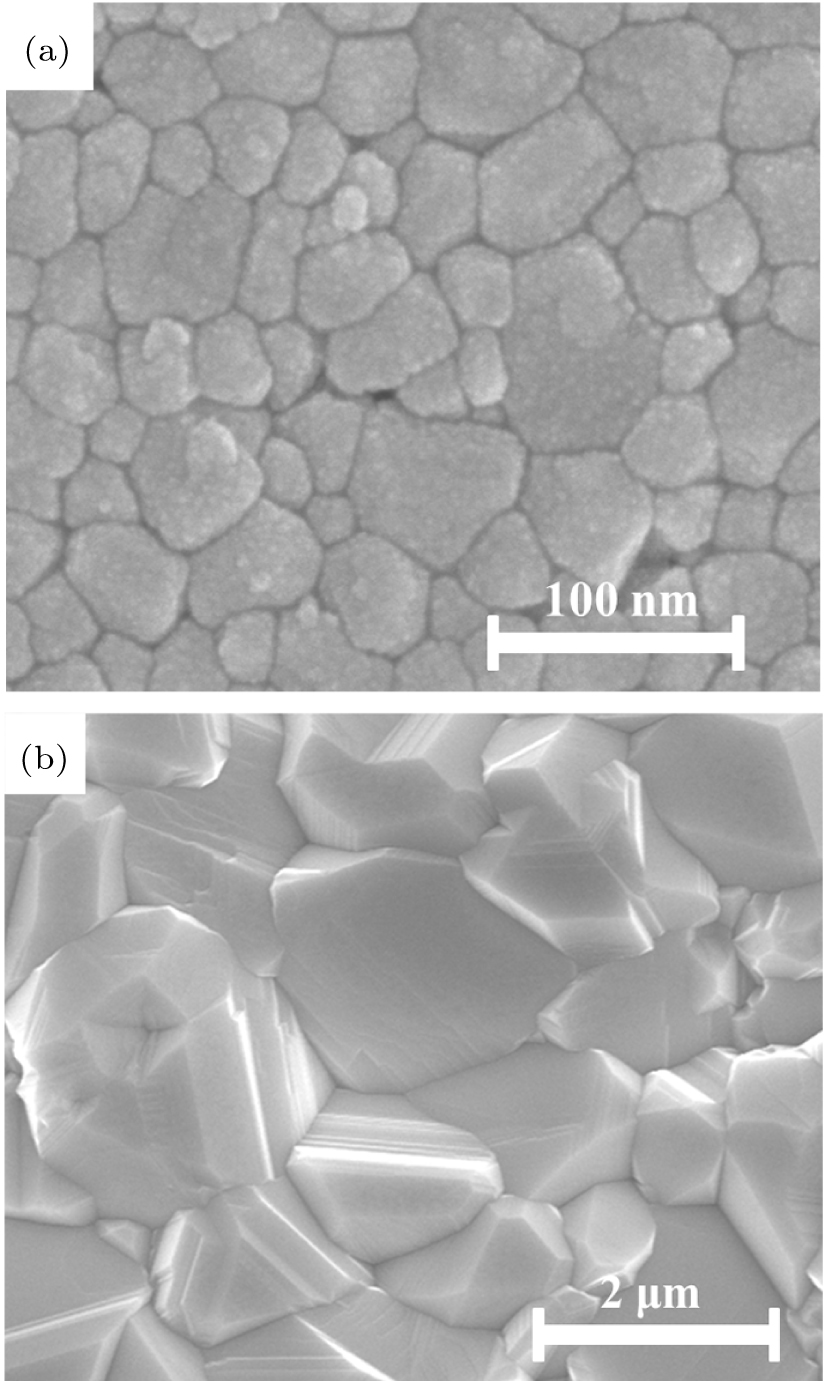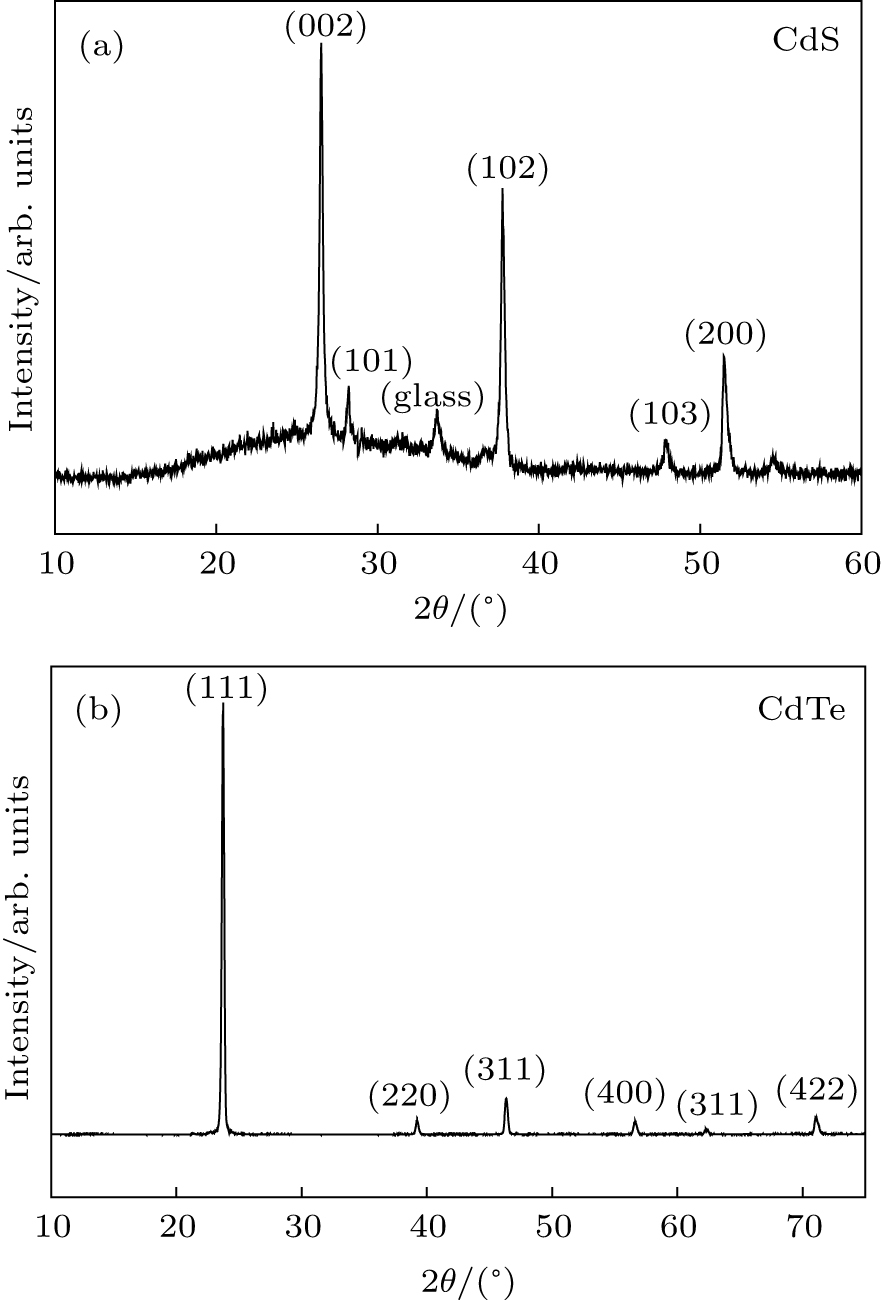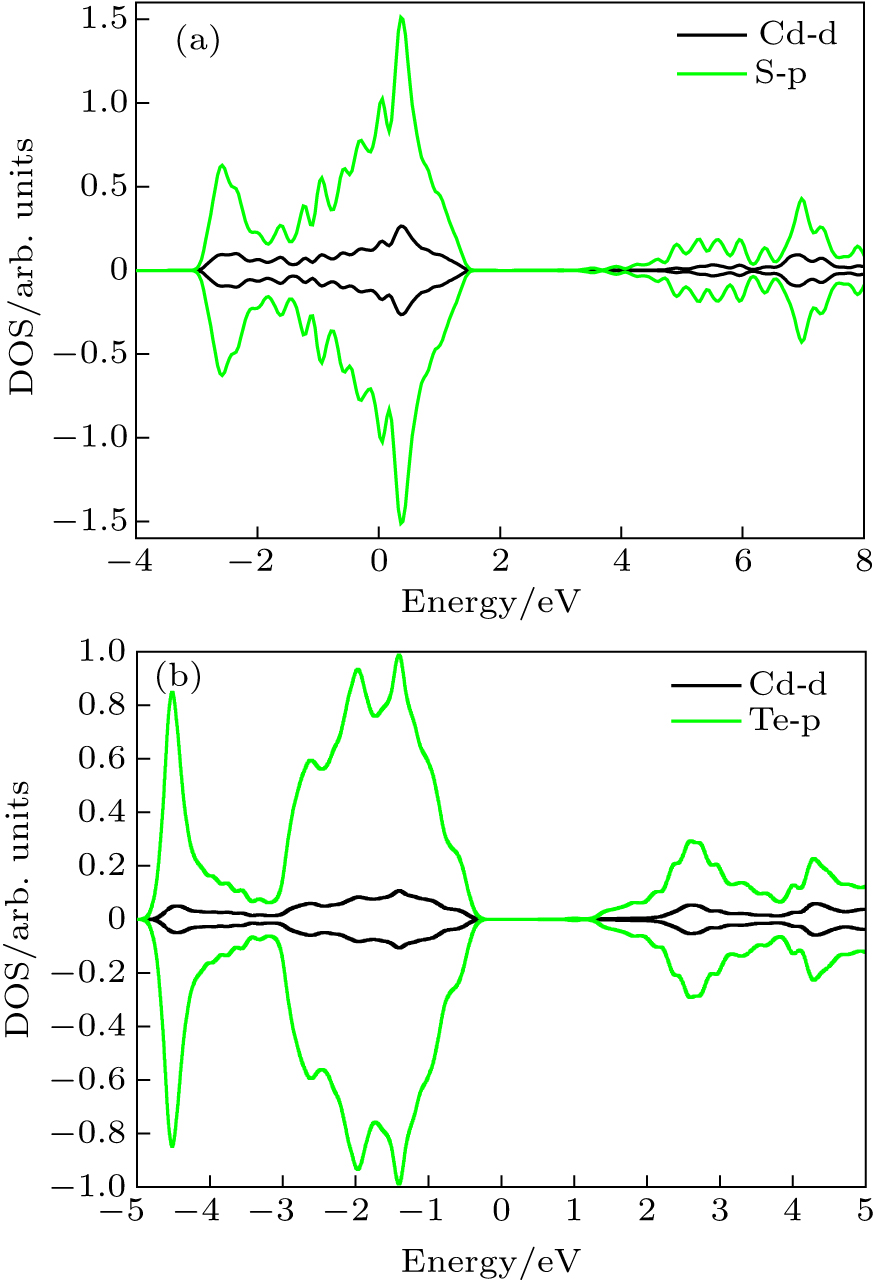† Corresponding author. E-mail:
The magnetic property in a material is induced by the unpaired electrons. This can occur due to defect states which can enhance the magnetic moment and the spin polarization. In this report, CdS and CdTe thin films are grown on FTO glass substrates by chemical bath deposition and close-spaced sublimation, respectively. The magnetic properties, which are introduced from oxygen states, are found in CdS and CdTe thin films. From the hysteresis loop of magnetic moment it is revealed that CdS and CdTe thin films have different kinds of magnetic moments at different temperatures. The M–H curves indicate that from 100 K to 350 K, CdS and CdTe thin films show paramagnetism and diamagnetism, respectively. A superparamagnetic or a weakly ferromagnetic response is found at 5 K. It is also observed from ZFC/FC curves that magnetic moments decrease with temperature increasing. Spin polarized density functional calculation for spin magnetic moment is also carried out.
Magnetic materials are important materials due to their many applications in different fields including medical application, energy generation, microwave communication, and data storage.[1–7] It is important to study the origins of magnetism in materials in order to fabricate devices based on magnetic materials.[8] Researchers are beginning to investigate a variety of materials which have been studied relatively little before and exploring their unperceived magnetic behaviors.
A few of these materials are cadmium sulfide CdS and cadmium telluride CdTe, which are both II–IV group semiconductors. Although tremendous work has been done on the studies of optical properties of these materials, so far the work on their magnetic properties is still limited. The CdS and CdTe are suitable candidates for the use as host materials in different applications.[9,10] Some techniques such as electrode deposition, laser ablation, spray pyrolysis, radio frequency magnetron sputtering, close space vapor transport, and chemical bath deposition (CBD) can be employed to fabricate CdS and CdTe thin films.[11–16] The most simple and economical method of growing the CdS thin film is chemical bath deposition which can yield uniform and nearly stoichiometric CdS film at room temperature. CdS has some interesting properties. Its direct band gap value is 2.42 eV that makes it a suitable candidate for a number of applications which are beneficial for enhancement of device performance. The CdS film is used as a window layer in solar cell fabrication, photodetectors, piezoelectric transducers, and bolometers.[9,10,17] CdTe has a band gap of 1.45 eV, a high electron affinity of 4.5 eV and a high work function of 5.7 eV.[18] CdTe has been used in some areas, such as CdTe thin film used as an absorber layer of solar cell, integrated optics, optoelectronics, gamma ray detection, and x-ray imaging.[19,20] CdTe can be fabricated by different techniques including electro-deposition, molecular beam epitaxial, metal–organic chemical vapor deposition, screen printing, and close-spaced sublimation.[21] In this work, we fabricate CdTe thin films by a home-made close-spaced sublimation method (CSS). There are many fundamental problems related to the materials, which are needed to be studied in a consistent way. One of them is about the physical properties of these materials under different external environments. In this study, the magnetic responses in CdS and CdTe thin films under low and high temperatures are investigated, the M–H curves are measured, and some interesting properties in CdS and CdTe thin films are found.
Close-spaced sublimation method was used to fabricate the CdTe thin films. CdTe films were grown on glass substrates coated with transparent conducting oxide (FTO). The source and substrate temperatures were 670 °C and 540 °C, respectively. The spacing between source and substrate was 3 mm, the deposition atmosphere was a mixture of O







The film morphological microstructures were characterized by using a field emission scanning electron microscope (SEM, Sirion 200). XPS measurements were performed by using a Thermo VG Scientific ESCALAB 250 instrument with Al Kα as the x-ray source. All the XPS spectra were calibrated by using the carbon 1s peak (284.6 eV). High resolution x-ray diffraction (XRD) was carried out to characterize the film structure. The magnetic moments of the CdS and the CdTe thin films were measured by using a vibrating sample magnetometer (VSM). Superconducting quantum interference device (SQUID, quantum design MPMS XL-7) magnetometer was employed for VSM. The magnetic moment was measured by using VSM in a temperature range of 5 K–350 K.
Figure 


Figure 



Figure 










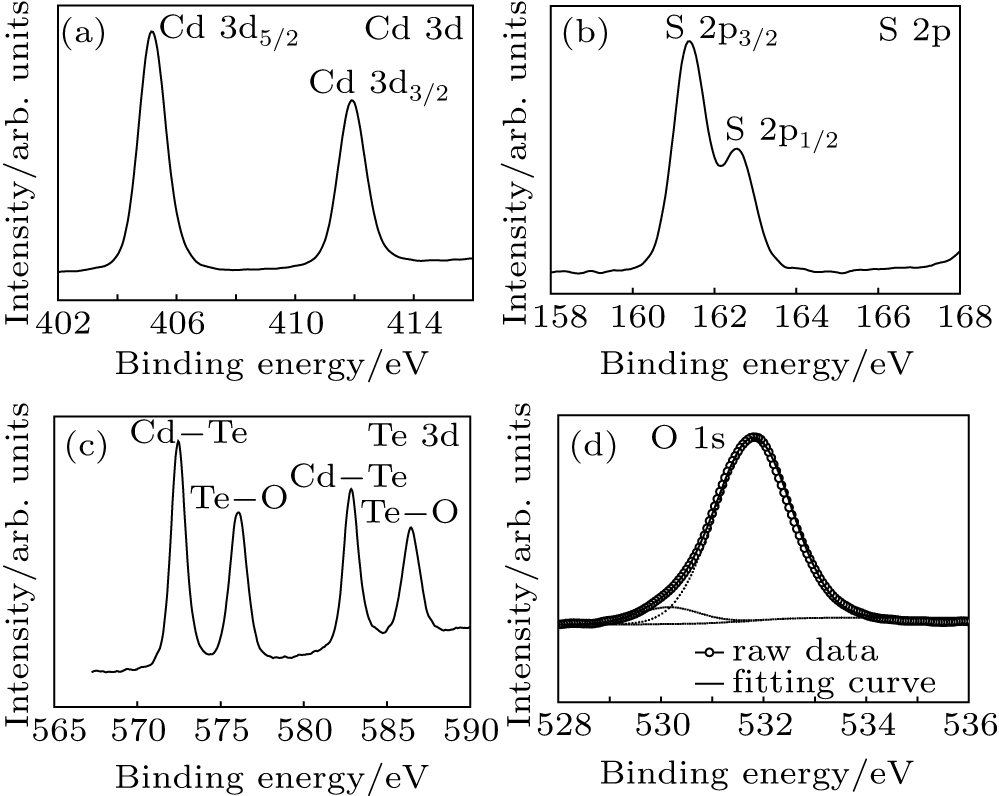 | Fig. 3. Core-level XPS spectra of (a) Cd 3d of CdTe, (b) S 2p of CdS, (c) Te 3d of CdTe, and (d) the O 1s peaks of CdTe. |
We measure the magnetic moments of the samples by using a vibrating sample magnetometer (VSM) technique at different temperatures to study the magnetic responses of the samples. From the magnetic hysteretic loop we observe the magnetic responses of the growth samples. Figure
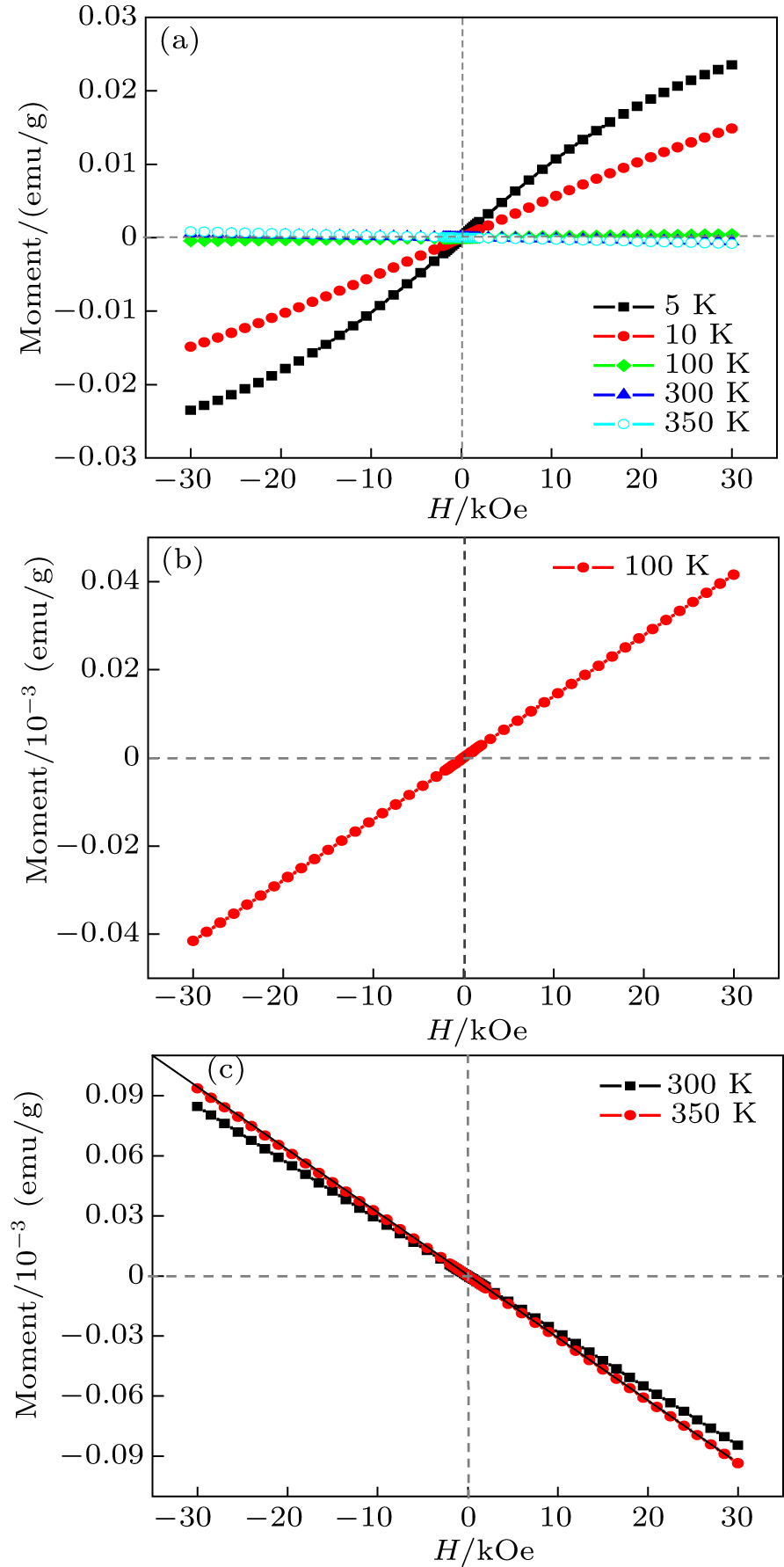 | Fig. 4. (color online) M–H curves of a CdS thin film measured at (a) 5, 10, 100, 300, and 350 K, (b) 100 K, and (c) 300 K and 350 K, respectively. The unit 

|
The paramagnetic response is very high at 10 K compared with that measured at 100 K (Figs. 

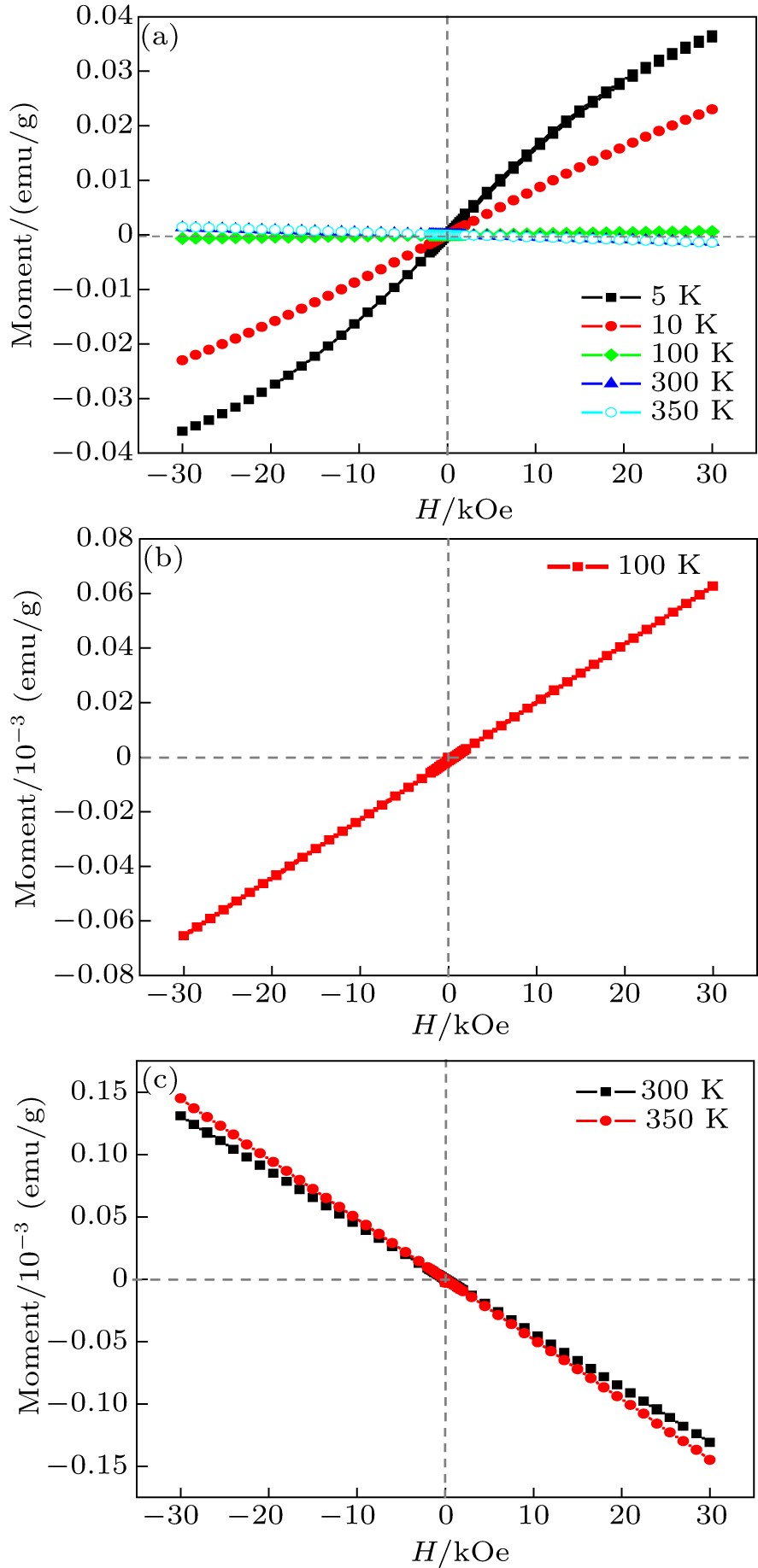 | Fig. 5. (color online) (a) M–H curves of a CdTe thin film measured at (a) 5, 10, 100, 300, and 350 K, (b)100 K, and (c)300 K, and 350 K, respectively. |
Figure
 | Fig. 6. (color online) Zero-field-cooled (ZFC) and field-cooled (FC) magnetization curves of (a) CdS and (b) CdTe thin films measured at 400 Oe. |
In addition, many reports have indicated that the magnetic moment is induced by the unpaired electrons and polarization. But the surrounding vacancies, defects and interaction of vacancy–vacancy in the ground state could also enhance the magnetic moments and the spin polarization. Therefore, it suggests that the oxygen defects shown in our XPS results could be the source of magnetism. Ground-state electronic and magnetic properties are studied by the first-principle density functional theory (DFT) calculations with using the spin-polarized plane-wave, which is implemented by Vienna ab-initio simulation package (VASP).[30,31] The generalized gradient approximation (GGA) in Perdew–Burke–Ernzerhof (PBE) is used for the exchange correlation functional and projector augmented wave (PAW) potentials.[32]
The lattice parameters of CdS and CdTe unit cells are taken from our experimental data, respectively. The cut-off energy is set to be 500 eV and the integral number of regular k-points with spaced sampling of 

The calculated densities of states for the S-p, the Te-p, and the Cd-d orbitals of CdS and CdTe are shown in Fig.
In summary, CdS and CdTe thin films are fabricated, which behave as superparamagnetism or weak ferromagnetism at low temperature. It is observed from the experimental characterization that the oxygen vacancies could enhance the spin moments between valance and conduction band. The CdS and CdTe thin films at different temperatures show different electronic moments which could change the magnetism of the films. At low temperature the CdS and CdTe thin films exhibit ferromagnetism due to spin moments of electrons in the atoms. The XPS peaks of oxygen imply that the vacancies in the samples could enhance the ferromagnetism. Moreover, from the spin-polarized calculation we observe the spin states of electrons in different orbital states.
| [1] | |
| [2] | |
| [3] | |
| [4] | |
| [5] | |
| [6] | |
| [7] | |
| [8] | |
| [9] | |
| [10] | |
| [11] | |
| [12] | |
| [13] | |
| [14] | |
| [15] | |
| [16] | |
| [17] | |
| [18] | |
| [19] | |
| [20] | |
| [21] | |
| [22] | |
| [23] | |
| [24] | |
| [25] | |
| [26] | |
| [27] | |
| [28] | |
| [29] | |
| [30] | |
| [31] | |
| [32] |


